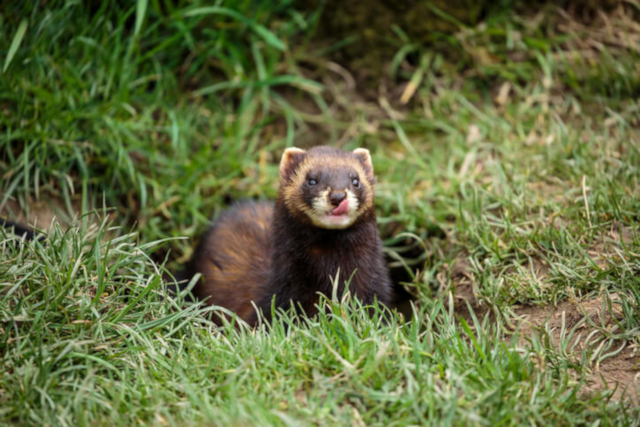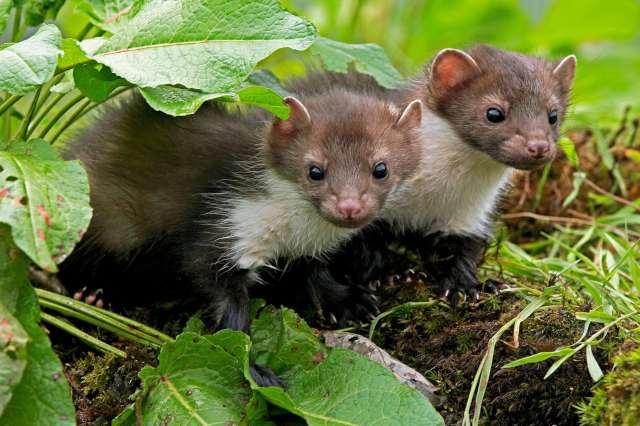
For a fourth year running, we are proud to be in partnership with the wonderful Chester Zoo. A global conservation and education charity as well as a local attraction, Chester Zoo is dedicated to the protection of its 35,000 threatened animals who call the zoo home.
Chester Zoo is working hard to create a transformative change in the hope to prevent the extinction of so many magnificent animals, by putting an emphasis on populations, places, people and policy. Be sure to check out even more of their amazing work and their 10 year conservation master plan to discover what we can do to help as a society.
In past years, our sponsorships have helped to fund their education programmes so that we can learn more about our native species and how to prevent their extinction. This year, we are excited to be helping out with a brand new research project. We will be assisting the UK Wildlife Conservation Project in protecting the mustelids on the Chester Zoo estate.
Chester Zoo’s UK wildlife specialists have been surveying a range of native species on the zoo estate and have confirmed the presence of small mustelids. Mustelidae are a family of carnivorous mammals that consist of badgers, otters, weasels, ferrets, polecats and more! This exciting project will focus on the smaller of these species which are weasels, stoats and polecats.
These inquisitive animals were first captured on the zoo’s remote wildlife trail cameras. However, in order to get a better understanding of the distribution of this species they are to be observed using an adjusted camera trapping device called ‘the Mostella’. This is a non-invasive technique specifically designed to study and monitor small mustelids.
The purpose of this research is to get an insight into the population dynamics of weasels, stoats and polecats across the zoo estate which will then inform the Chester Zoo Biodiversity Action Plan and any habitat management prescriptions.
There are many kinds of mustelids with around 60 species worldwide. Here in the UK we have 7 species of small mustelids.
One of the more well known and larger mustelid species in the UK is the badger. They are highly social animals living in family groups called ‘clans’. Their homes are underground and known as ‘setts’ which are made up of tunnels and chambers. Badgers are easily identified with their black and white stripe faces but they are generally nocturnal coming out to forage at night.
Another type of mustelid with what can appear to be a black and white face is the polecat. These are much smaller than a badger though and have a long slinky body like all smaller mustelids. Polecats have a mask-like print on their face giving them their unique ‘bandit’ aesthetic and the fur isn’t black and white but dark brown on the surface with a lighter underfur. Often, polecats may have cross-bred with released domestic ferrets. You can identify these hybrids by their creamier fur and lighter facial markings.

Stoats and weasels can look similar especially when they move so fast, so how do you tell them apart? The easiest way to do so is by looking at the tail. Stoats have a black paint brush-like tuft at the end of their tail, weasels do not. They both have chestnut brown coloured fur with a white underbelly, but if you are able to look closely, the outline of this on weasels is wavy, and smoother, more uniform on stoats.
Keep your eye out for these marvellous mustelids hiding in hedgerows and you may be lucky enough to see one near a small burrow, badger sett, or any other nooks and crannies they can squeeze into!

Get up close to even more amazing animals for yourself on a trip to Chester Zoo. Stoats, weasels and polecats have all been sighted on the nature reserve and some people have even caught a glimpse of them on the car park running through the hedgerows!
The Chester Zoo nature reserve is always open and free to visit, just follow the signs through the main car park.
If you have seen any small or large mustelids in Cheshire please help to add to the understanding of their distribution by recording your sightings with the Cheshire Local Environmental Records Centre RECORD Home (record-lrc.co.uk)
If you spot them anywhere else in the UK you can find out which LRC to send your record to here: LERC-finder (alerc.org.uk)
Are you on the phone to our call centre? Your Customer ID is:
Get involved in the Discussion